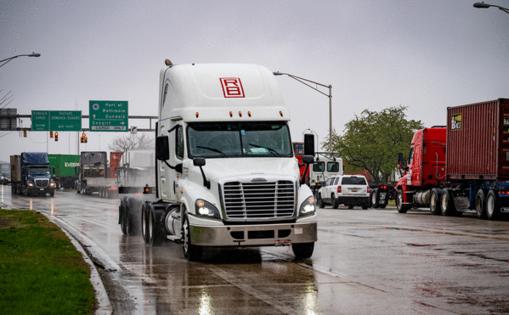Port of Baltimore businesses pivot after Key Bridge collapse: 'We're already making alternative plans'
Published in Business News
Soon after the container ship Dali struck and toppled the Francis Scott Key Bridge early Tuesday, Paul Brashier was among many in the shipping industry who shifted into overdrive.
From Texas, Brashier turned his attention to the cargo — tires, dog food, home goods, cookware — packed into containers on ships headed to the Port of Baltimore and handled by his logistics company. At 3 a.m., after hearing about what ended up being a deadly collision, he rushed to wake up some clients and put contingency plans in place.
“Our largest concern once we saw that that bridge cut off the harbor for vessel traffic for containerized cargo, we started looking at possible diversion ports and what was going to happen to the freight and start working with clients,” said Brashier, a vice president at the Reno, Nevada-based ITS Logistics.
“That was the triage, and we’re going to be doing that here probably for the next five to seven days,” said Brashier, whose firm transports freight from ocean ports to distribution centers or stores in 56 markets, including Baltimore, one of its largest. The company also handles domestic trucking and brings cargo to ports for export.
With remains of the span that connects Interstate 695 blocking the only channel in and out of the port and vessel traffic suspended, operations have been disrupted or forever altered for the many businesses and workers who move goods and vehicles through the port and beyond. Many companies like ITS are scrambling to reroute cargo to places like Norfolk, Virginia; Savannah, Georgia; Charleston, South Carolina; New York and New Jersey.
On Wednesday, authorities continued collecting evidence and searching for six missing construction workers in the Patapsco River, while experts predicted a bridge rebuild could take as little as two years or as many as 15. And the National Transportation Safety Board said it is analyzing the ship’s onboard data.
Brashier, whose clients are retailers, manufacturers and the auto industry, said Wednesday the company has leaned heavily on its “visibility” technology, which allows clients to see almost in real time the location of their freight before it arrives in the U.S.
“It’s a great big focus right now as we’re waiting to see where all these containers that were going to go to Baltimore end up getting discharged on the East Coast,” he said.
By later Tuesday, the company had begun planning for its next phase of operations — the ability to reach normal container flow in the next two weeks — at ports that are new to clients. By early next week, the company expects to start longer-term planning, making decisions such as potentially moving some business to the West Coast.
Brashier said his company has infrastructure to handle customers whose freight is rerouted. But it may be more difficult for the shippers.
...continued
©2024 The Baltimore Sun. Visit at baltimoresun.com. Distributed by Tribune Content Agency, LLC.







Comments